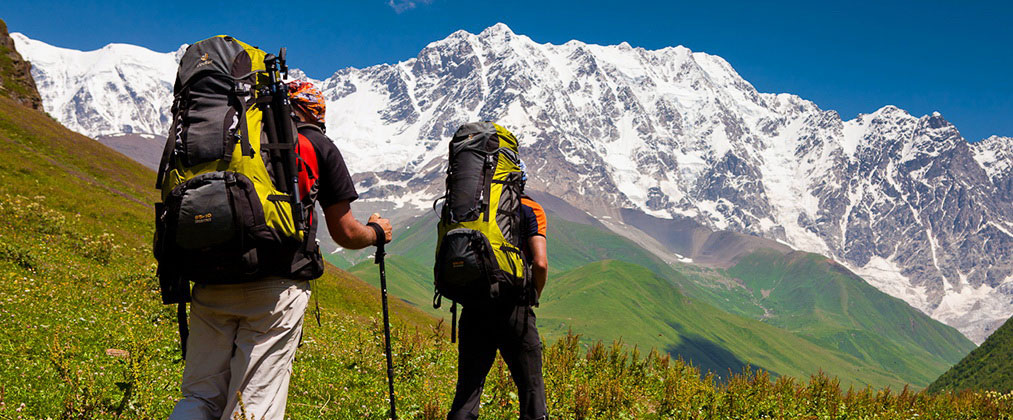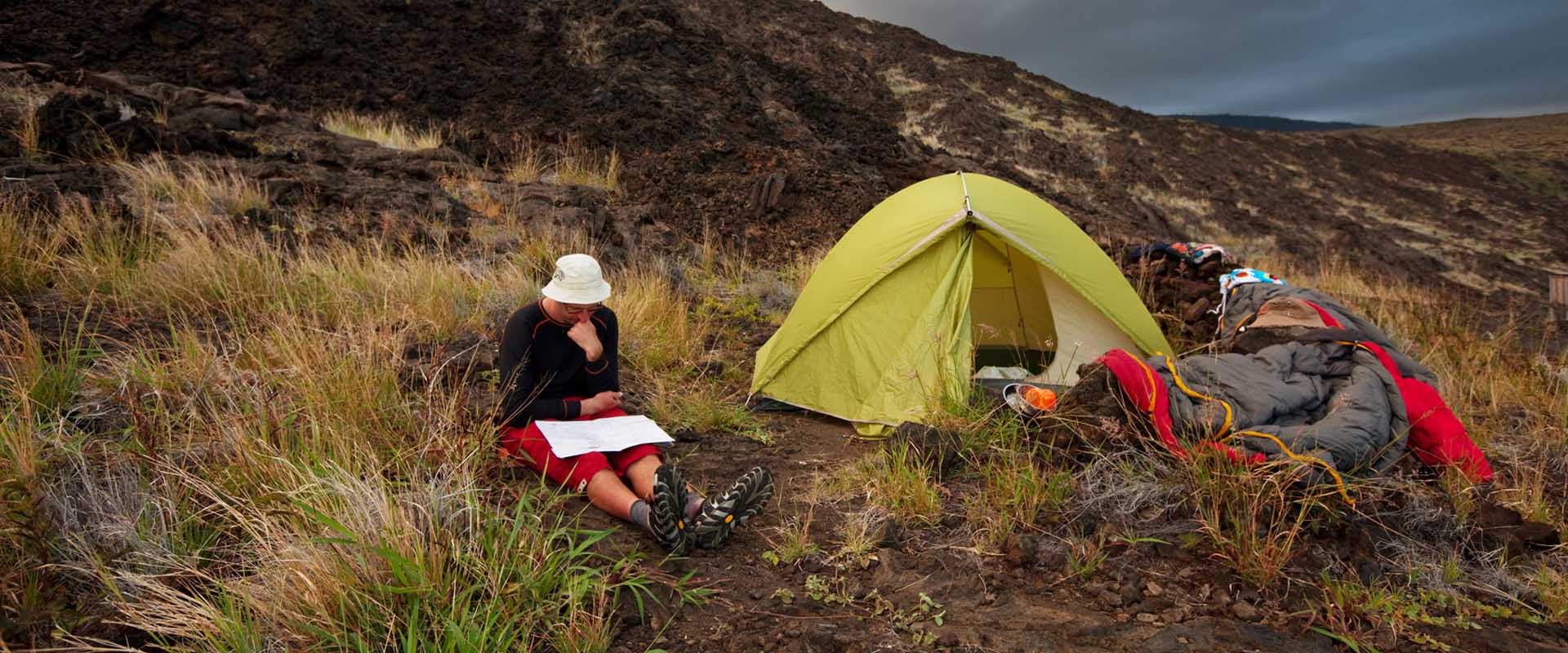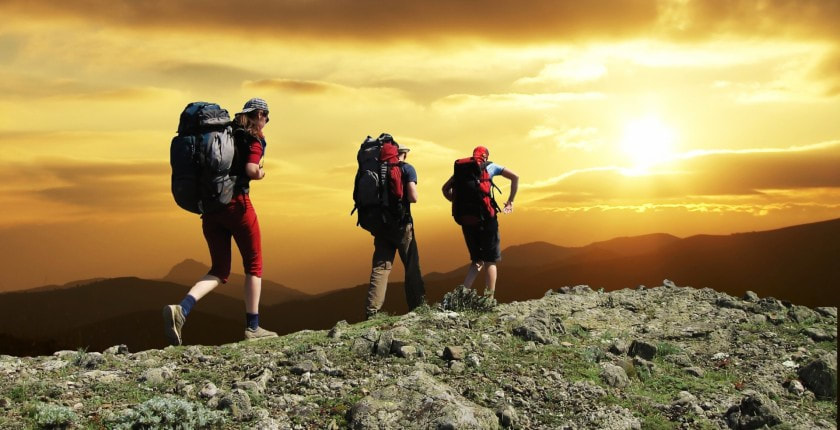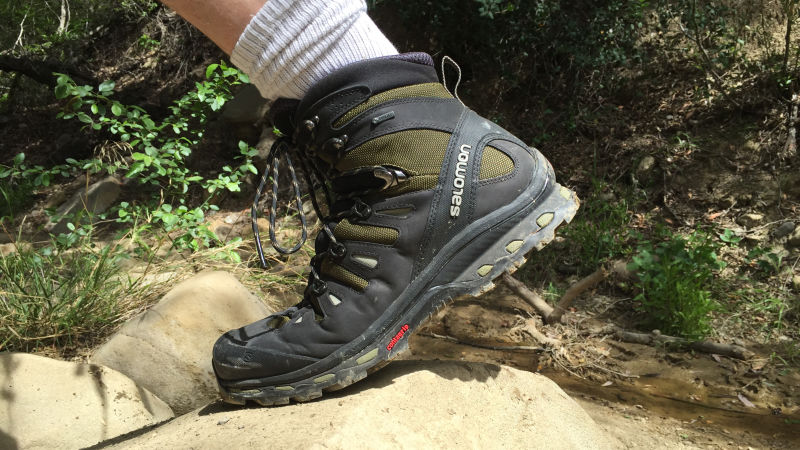|
Nothing ruins a good walk or climb like blisters and twisted ankles. Every outdoorsy individual knows that good shoes can make or break any activity. This is why it is imperative to be able to choose the best hiking boots that fit you the best. They are ideally used for tackling rugged trails, and they also support the ankles better. Wearing the appropriate type of footwear on your hike is important for the sake of your feet and pleasure you will receive. Beginners use trail or Light Boots They are constructed out of light fabrics like nylon or suede and are supported by a special pattern of leather. Breaking them in can be done quicker as compared to other climbing footwear. They are also ideal for walks that last for a few days. Cross-Hikers or Medium Weight types are the best hiking boots for moderate to easy types of terrain. The cut reaches up to the ankle which could require a longer period for breaking in the shoes. Its more constricting cut will also take some getting used to. The increased support makes it comfortable for a three day trail or even longer periods. Tips on How to Choose the Best Hiking Boots Heavy or Off-The-Trail Boots are ideal for more difficult routes. They are constructed with more features like toe-caps, reinforced out-soles, custom mid-soles and specialized linings. They provide superior support and act as a shock absorbed. However, they are also heavier and stiffer which requires a bit of training on the part of the hiker. Before your hiking in the outdoor you should need boot knife with your hiking boots. Get more tips about top choice boot knife click here. Hike Duration The longer your hiking adventure, the more the demand in your frame and ft, so that you will want greater help from your boot. A longer experience additionally typically entails carrying a heavier percent – once more requiring also boot assist; each underneath the foot with a stiffer mid-sole and around the ankle with suitable heel support. Despite the advantages of sturdy and durable trekking boots, light-weight hiking shoes have their blessings too. A lightweight shoe can save you one hundred–200g whenever you pass your foot so that you will store some strength over the route of an afternoon. Consider the weight of the footwear Each pound of weight for your shoes is equivalent to five pounds of added weight to your backpack. Look at moisture wicking properties. This means that sweat is absorbed and taken away from direct contact with the skin. Remember that wet feet cause painful blisters, so it is important that your footwear is breathable and water-tight at the same time. Look at the sole construction Your archers should be fully supported; the feet should not lay flat when supporting the weight of your body and the added burden of your climbing gear. The soles should have deep grooves on tough rubber that is still soft enough to cushion your feet as you walk naturally. If you want to hiking difficult mountain area or deep forest hunting you can choose proper footwear.Deep grooves provide traction on slippery surfaces and sink into soft surfaces for better grip. Check that the toe and heel area have minimal foam padding because this will cause discomfort after a few minutes of hiking. Place insoles if your feet are not perfectly molded inside the shoe, this especially applies to people with flat feet or large toes. Tongues are the flaps which cover the boot’s upper inlets. They are connected to the boots via gussets and prevent water, mud, and dirt from entering. Check that the tongue and gusset do not exert pressure on your ankle when the laces are tightened. They should be a comfortably snug fit. Avoid flat laces because they break easily Get braided nylon laces or cords. They are stronger and can take constant friction without unraveling. Make sure there are screed collars, so the back of your ankles doesn’t chafe. The best hiking boots are those that specifically fit your skill level, target terrain and feet type. Waterproof or now not Water in our boots is a definite no-no. It’ll cause odor construct-up, blisters and it’s typically uncomfortable. So, we ought to encompass water-proof materials that allow our ft to “breathe” and permit perspiration to get away. Gore-Tex membrane is all of the rages in recent times, supplied the temperatures aren’t too excessive. Injury protection Two most commonplace hiking injuries are twisted ankles and stubbed toes. Therefore, the rougher the terrain, the more ankle support we’ll need. Inclined surfaces will punish our feet for choosing a trekking boot without enough unfastened room in the toe box. Get More Resource Deer Hunting Tips For Beginner
27 Comments
9/5/2022 09:38:06 am
Really informative article, I had the opportunity to learn a lot, thank you. https://freecodezilla.net/download-duplicator-pro-wordpress-plugin/
Reply
9/11/2022 02:52:15 pm
Really informative article, I had the opportunity to learn a lot, thank you. https://kurma.website/
Reply
9/12/2022 12:51:52 am
Really informative article, I had the opportunity to learn a lot, thank you. https://odemebozdurma.com/
Reply
9/14/2022 03:21:21 pm
Really informative article, I had the opportunity to learn a lot, thank you. https://bit.ly/site-kurma
Reply
10/4/2022 09:01:23 pm
I think this post is useful for people. It has been very useful for me. Looking forward to the next one, thank you. https://escortnova.com/escort-ilanlari/izmir-escort/odemis-escort/
Reply
10/5/2022 02:00:22 am
It was a post that I found very successful. Good luck to you. https://escortnova.com/escort-ilanlari/sinop-escort/duragan-escort/
Reply
10/5/2022 09:20:51 pm
I follow your posts closely. I can find it thanks to your reliable share. Thank you. https://escortnova.com/escort-ilanlari/istanbul-escort/beykoz-escort/
Reply
10/6/2022 09:06:13 am
I support your continuation of your posts. I will be happy as new posts come. Thank you. https://escortnova.com/escort-ilanlari/kastamonu-escort/hanonu-escort/
Reply
10/7/2022 08:20:36 am
I think the content is at a successful level. It adds enough information. Thank you. https://escortnova.com/escort-ilanlari/burdur-escort/celtikci-escort/
Reply
10/7/2022 03:00:04 pm
Thank you for your sharing. I must say that I am successful in your content. https://escortnova.com/escort-ilanlari/bingol-escort/yayladere-escort/
Reply
10/8/2022 05:22:09 am
Thoughtful and real content is shared. Thank you for these shares. https://escortnova.com/escort-ilanlari/giresun-escort/gorele-escort/
Reply
11/23/2022 03:31:08 pm
Sitemizi ziyaret et ve evden is imkanina bak: https://sites.google.com/view/evden-ek-is/
Reply
12/11/2022 09:04:05 am
Düşmeyen bot takipçi satın al: https://takipcialdim.com/
Reply
12/11/2022 11:05:39 am
İnstagram beğeni takipçi satın al: https://takipcialdim.com/instagram-begeni-satin-al/
Reply
12/11/2022 11:06:06 am
Tiktok takipçi satışı burada: https://takipcialdim.com/tiktok-takipci-satin-al/
Reply
12/17/2022 03:16:17 am
takipçi satın al ve sitemizi ziyaret et: https://takipcim.com.tr/
Reply
12/20/2022 01:08:06 am
İnstagram takipçi satın almak istiyorsan tıkla.
Reply
1/5/2023 09:10:09 am
100 tl deneme bonusu veren siteleri öğrenmek istiyorsan tıkla.
Reply
Leave a Reply. |
|




